Article's Content
This is a safe space, we can all be honest with each other.
How many times have you Googled “effect vs. affect”?
Looked up what an oxford comma is?
Or searched how to spell “definitely” correctly?
Probably more than you would like to admit.
I’m regularly searching for the correct spelling of “truly,” as well as 30k+ other people each month.
But don’t beat yourself up, companies are hoping you forget so you will rely on Google instead of your own brain.
Entire marketing strategies are built on the premise that we are going to forget something we just read.
Especially when it comes to spelling and grammar, which is an extremely competitive space.
Grammarly has built an impressive $35M+ content moat based partly on this simple fact.
And they are beating out entrenched companies like Merriam-Webster and Dictionary.com on their way to a $13B valuation.
But that’s not the most impressive thing about Grammarly. In fact, most people would glance right over their hidden brilliance.
Let’s break it down.
The Internet Has No Spell Check
One of the easiest ways to check if you spelled something correctly is to Google it.
I do this multiple times throughout the day, mainly because I don’t trust my brain.
We have stopped remembering how to spell things or what an adverb is because of autocorrect and spell-check.
But those aren’t ingrained into every site on the internet…yet.
That is exactly why we see 70k+ people searching each month for the correct way to spell “traveling.” Or 106k+ people each month looking up what an oxford comma is and when to use it.
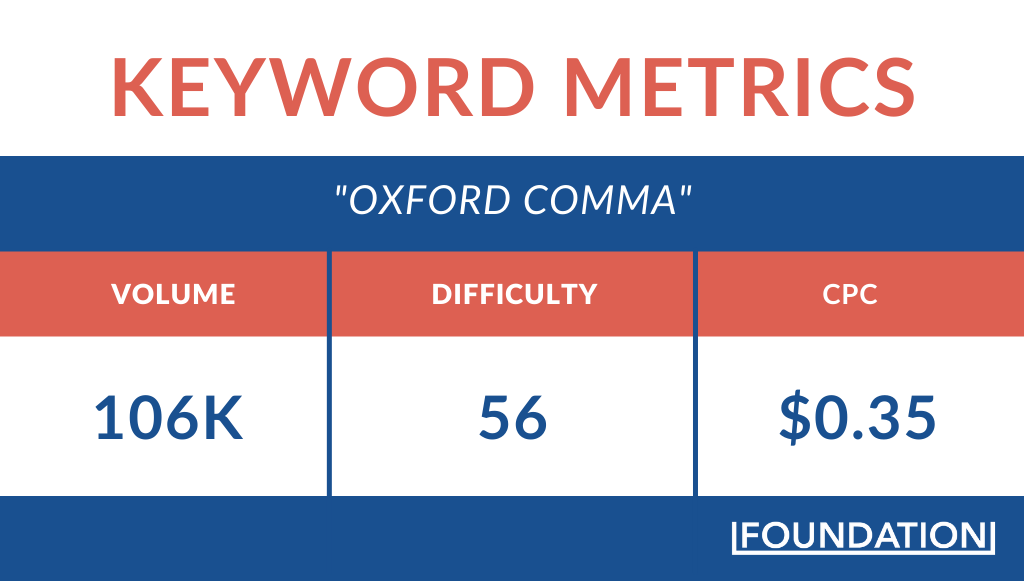
Right now, Grammarly is driving around 9M+ searches from 1.1M keywords per month to their blog content. That bucket of traffic is worth about $3M per month to them.
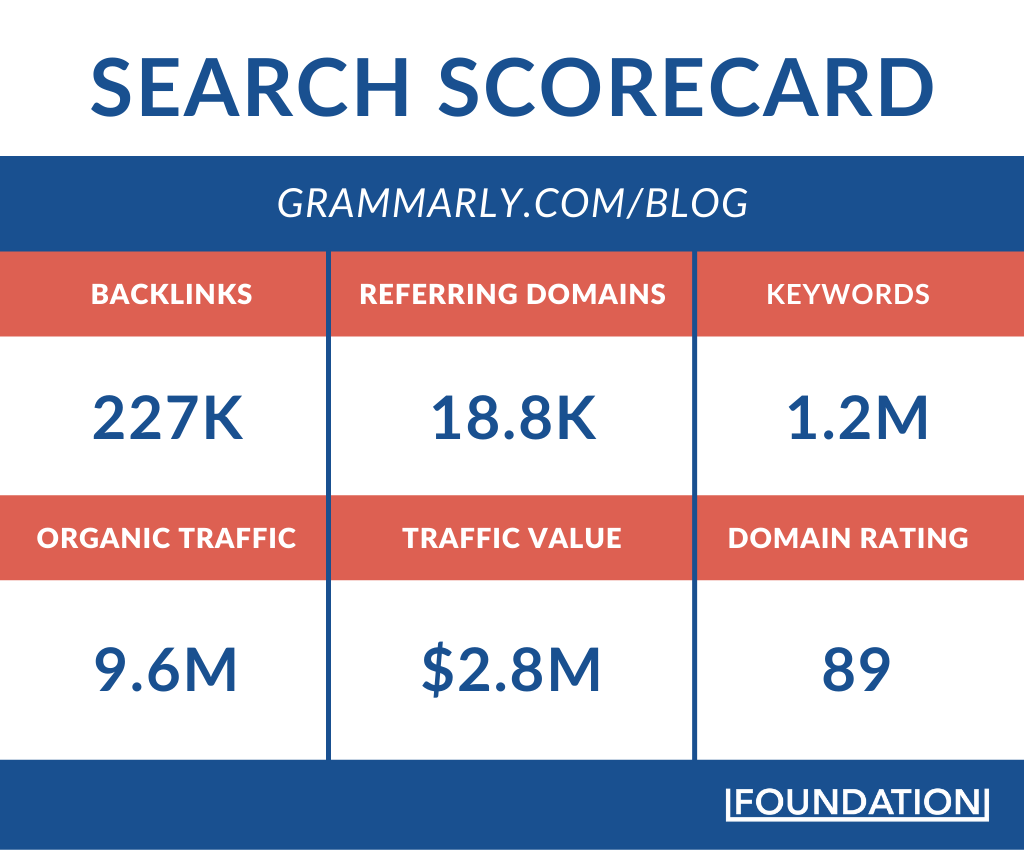
And most of it’s driven by people searching for spelling and grammar tips!
After taking a pretty quick look at their content, I could see it breaks down into 3 different categories:
- Common Typos Content
- Grammar Questions Content
- Social Driven Content
The Common Typos and Grammar Questions content is built for search from its core but the other content is mainly created to share on social media.

As you probably could have guessed, the Common Typos content targets people searching for common misspellings, such as:
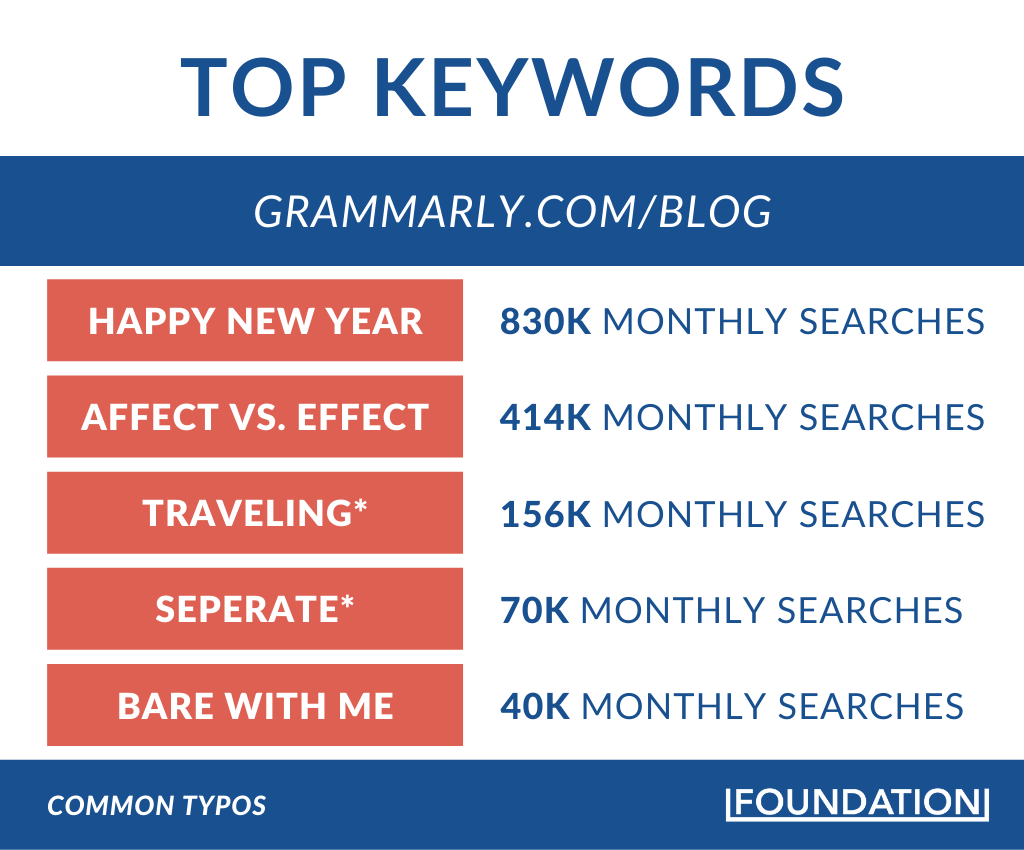
Right now, Grammarly ranks on the first or second spot for almost all of those keywords above, as well as millions more like that. If there is a random long-tail keyword related to the misspelling of “definitely,” you can bet Grammarly is ranking for it.
Honestly, you could build an incredible content moat just by targeting a few of these keywords. And Grammarly has done a great job of doing just that.
For example, the page that teaches you how to spell traveling drives about 87k sessions on an extremely difficult keyword:
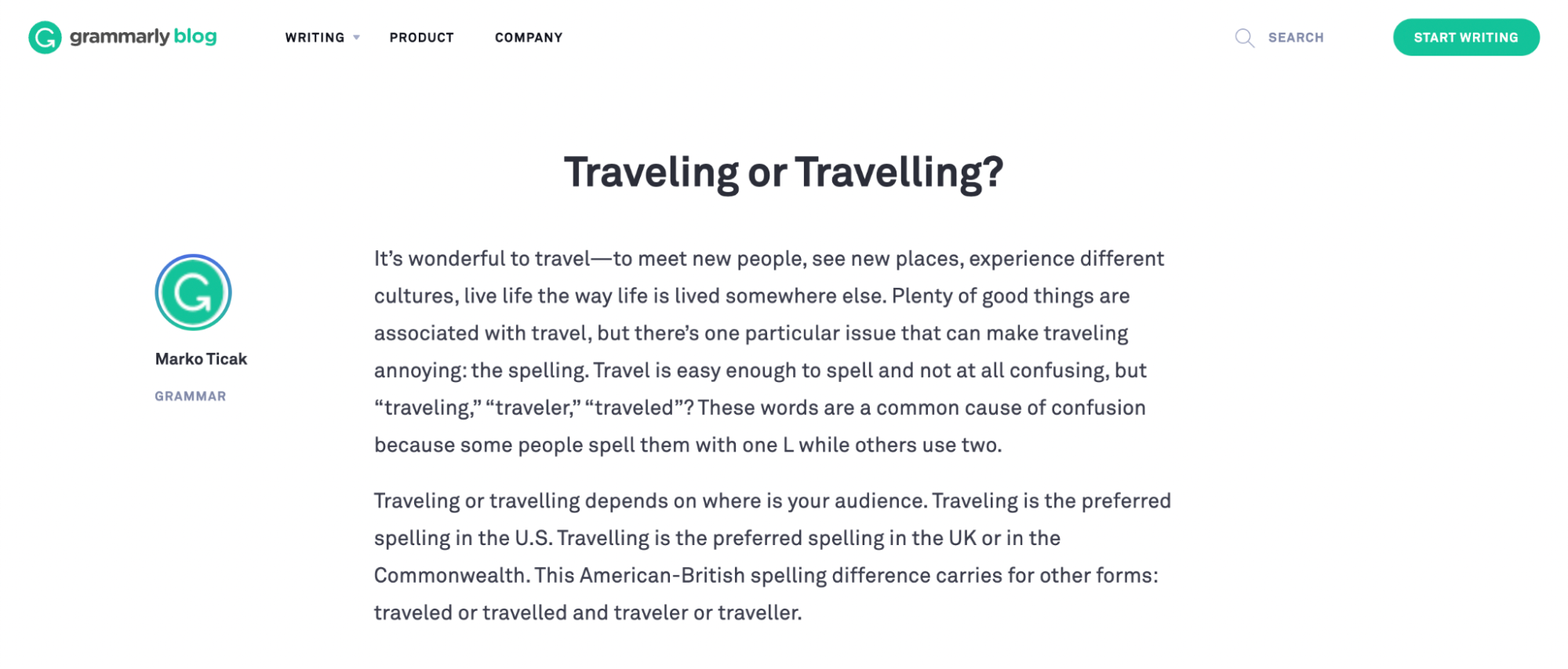
And their page that clarifies the right way to say Happy New Year drives around 20k sessions per month:

Also, for those who are curious, “Happy New Year” is commonly misspelled as “Happy New Years.”
As I typed that example out incorrectly, my Grammarly chrome extension tried to get me to change it. Not this time, my friend.
Here are a few of the other top Typo Content pages:
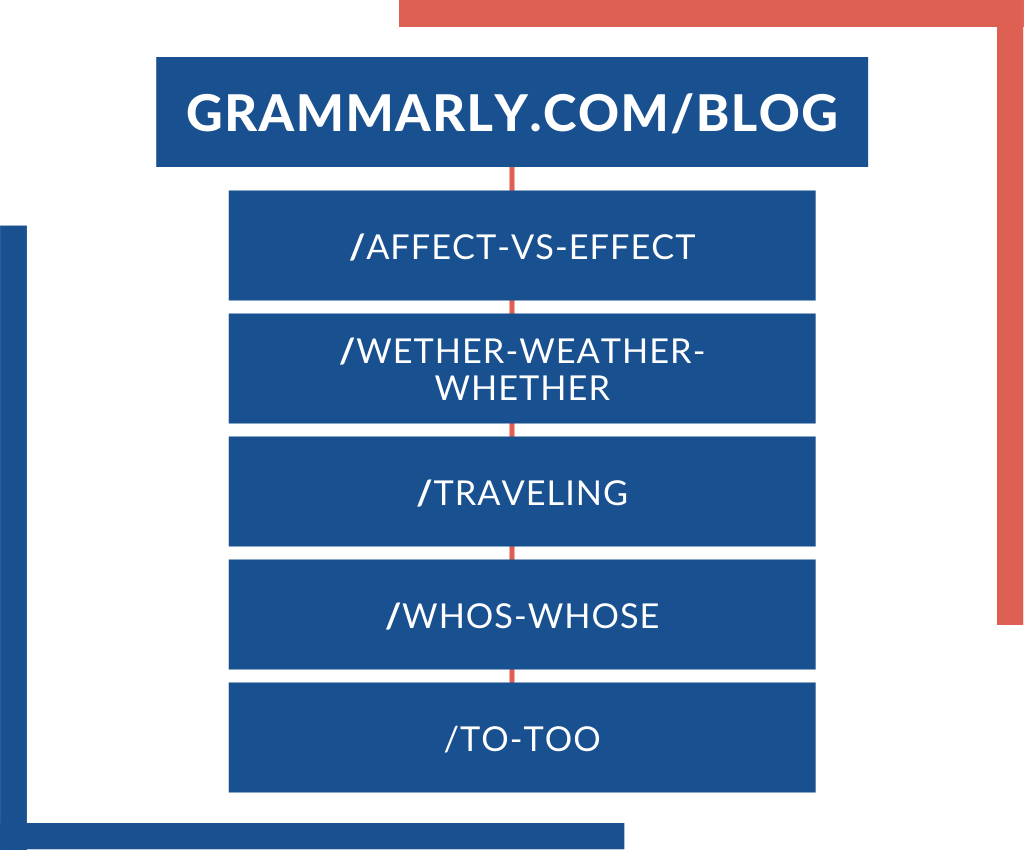
As you can see, some of these concepts were taught in elementary school but still get 10k+ searches per month:

The second category of content, Grammar Questions, follows a very similar pattern. But instead of searching for a common misspelling, people are searching for more complex grammatical concepts, such as:
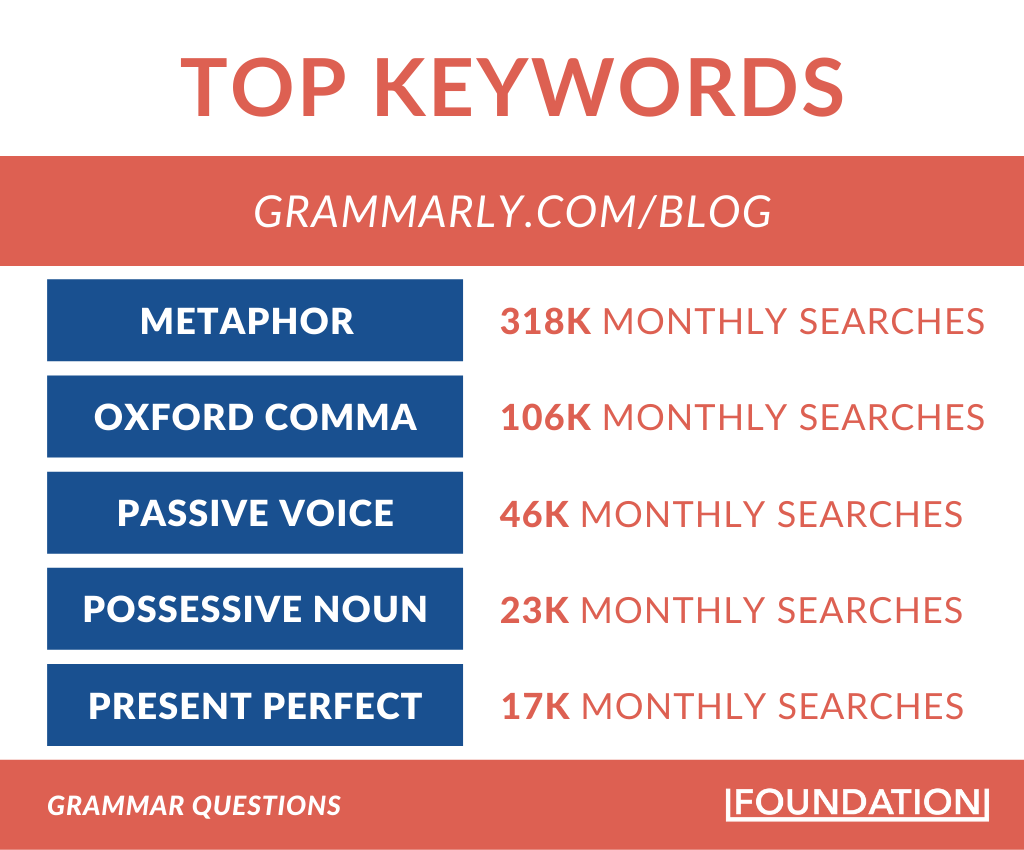
That said, Grammarly dominates some important featured snippets with this approach:

Some of their other Grammar Question pages cover:
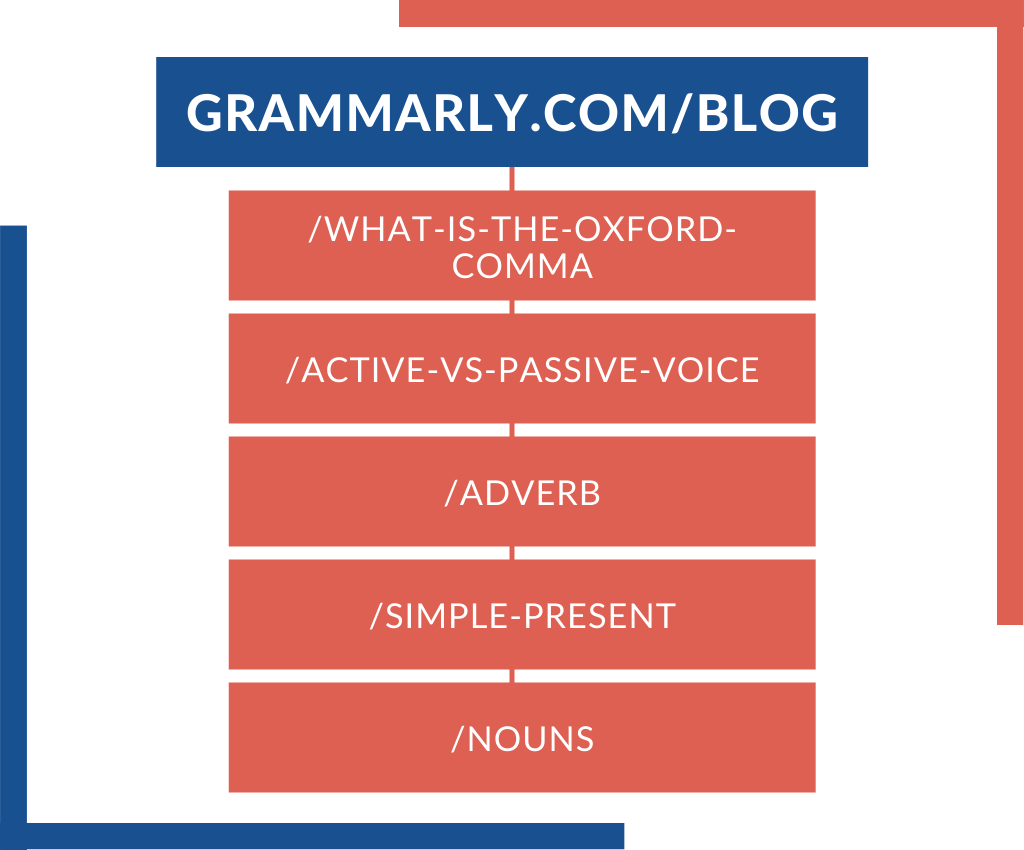
That single page about the controversial Oxford Comma drives nearly 90k sessions per month.
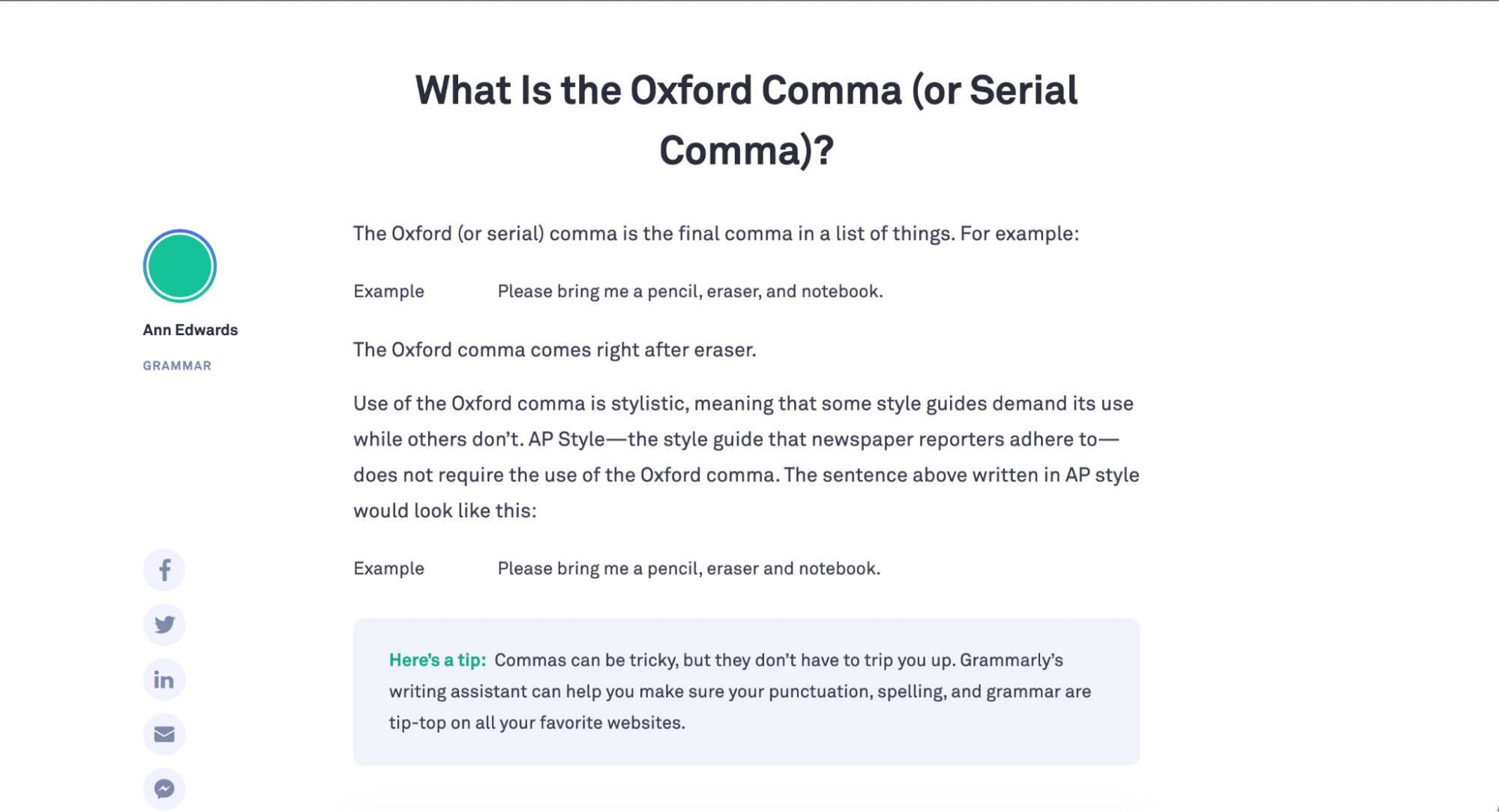
And the page that defines nouns pushes 100k+ sessions to Grammarly as well:
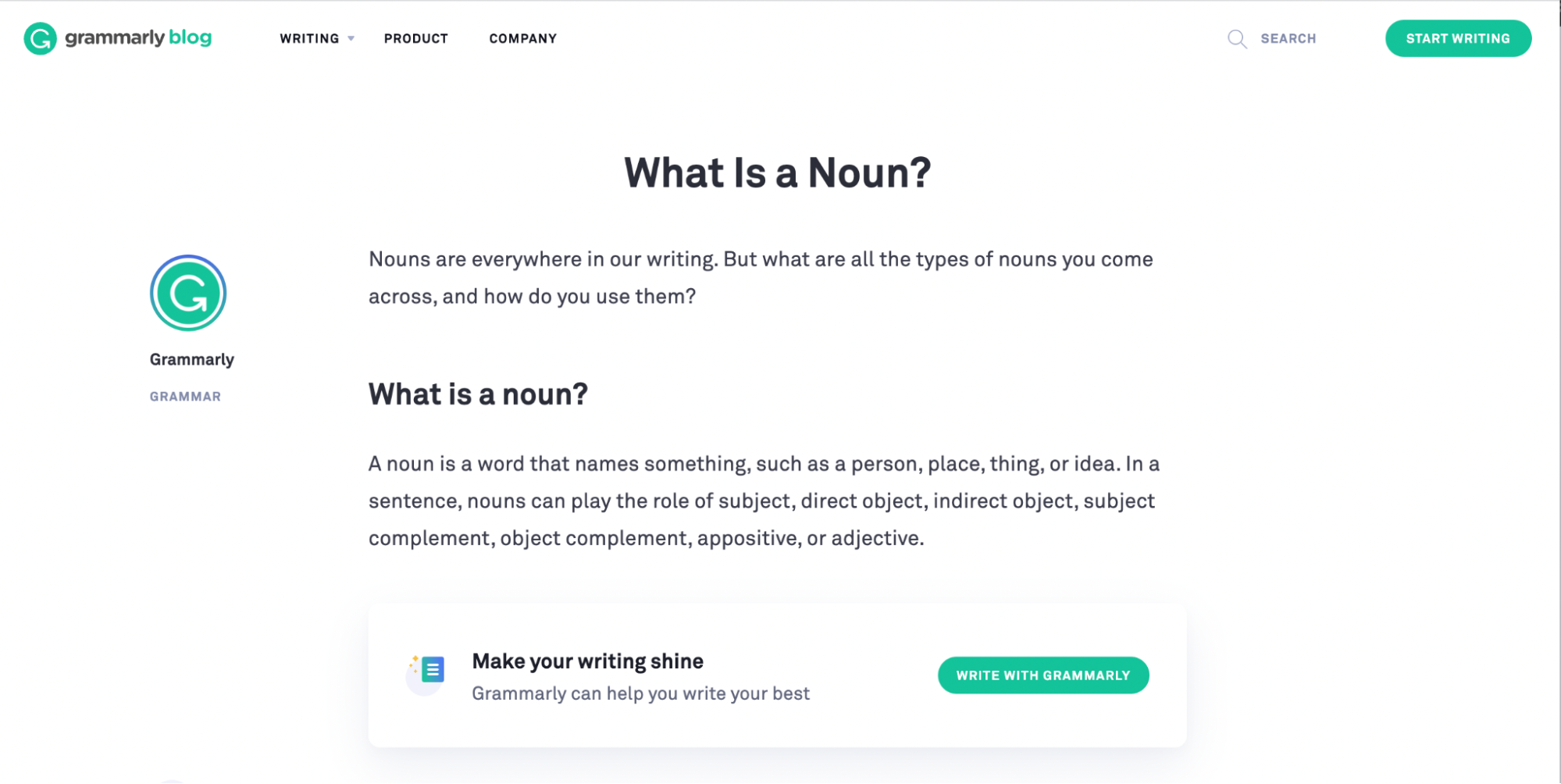
As you can see, they have built a very impressive content moat based on common typos and grammatical errors.
But Grammarly’s competitors wipe the floor with them in terms of sheer numbers. And it’s not even close.
Merriam-Webster and Dictionary.com drive nearly 200M+ searches per month from about 35M keywords.
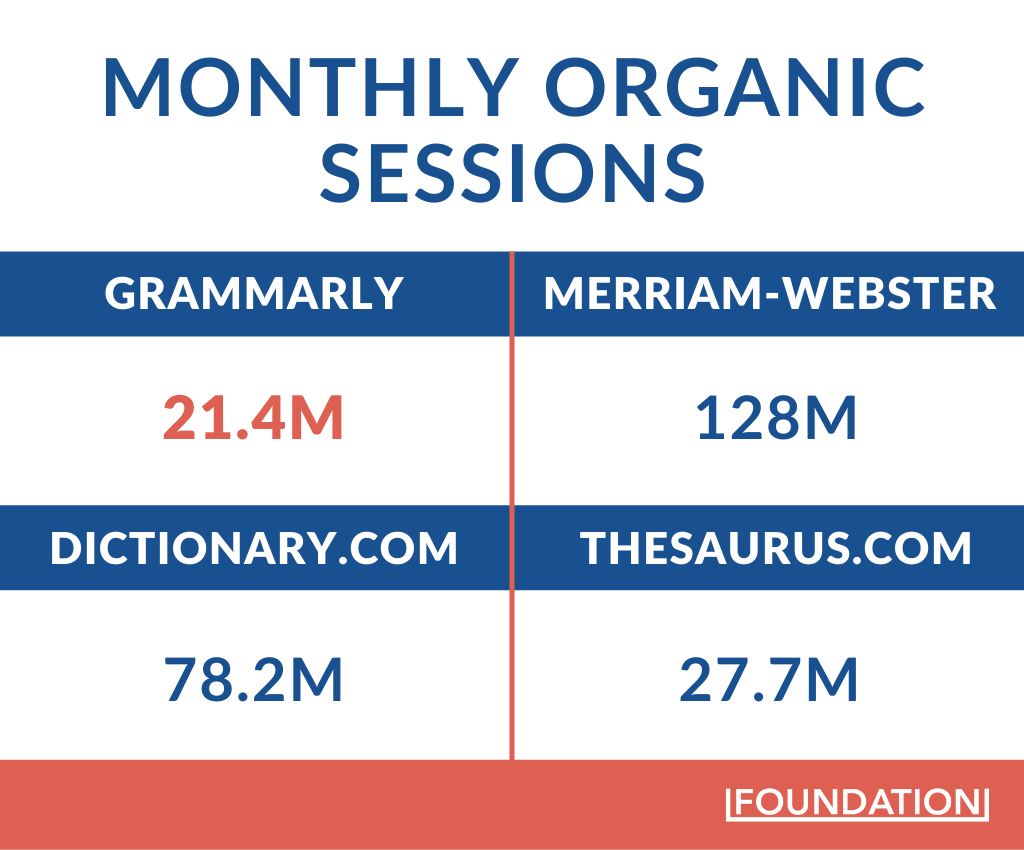
Now, a lot of these searches are going to be no-click searches, and this is a problem across the whole industry so it’s not like Merriam-Webster is going to drive more traffic on similar terms.
But Grammarly understands exactly who is searching for these terms and how to position their product as a solution, and their competitors can’t match that.
I truly think that is a key reason why they are worth $13B!
Perfect Product-Market Fit
You’ve probably heard of Product-Market Fit before. It’s the idea that when a company finds the right market for their product, that leads to an explosion of demand.
Grammarly has found that with all their incredible editor tools and extensions. There’s an incredible amount of demand for a tool that helps people communicate effectively, especially as the professional world shifted remotely over the past few years.
You can see this in their messaging across their entire site and social media shares.
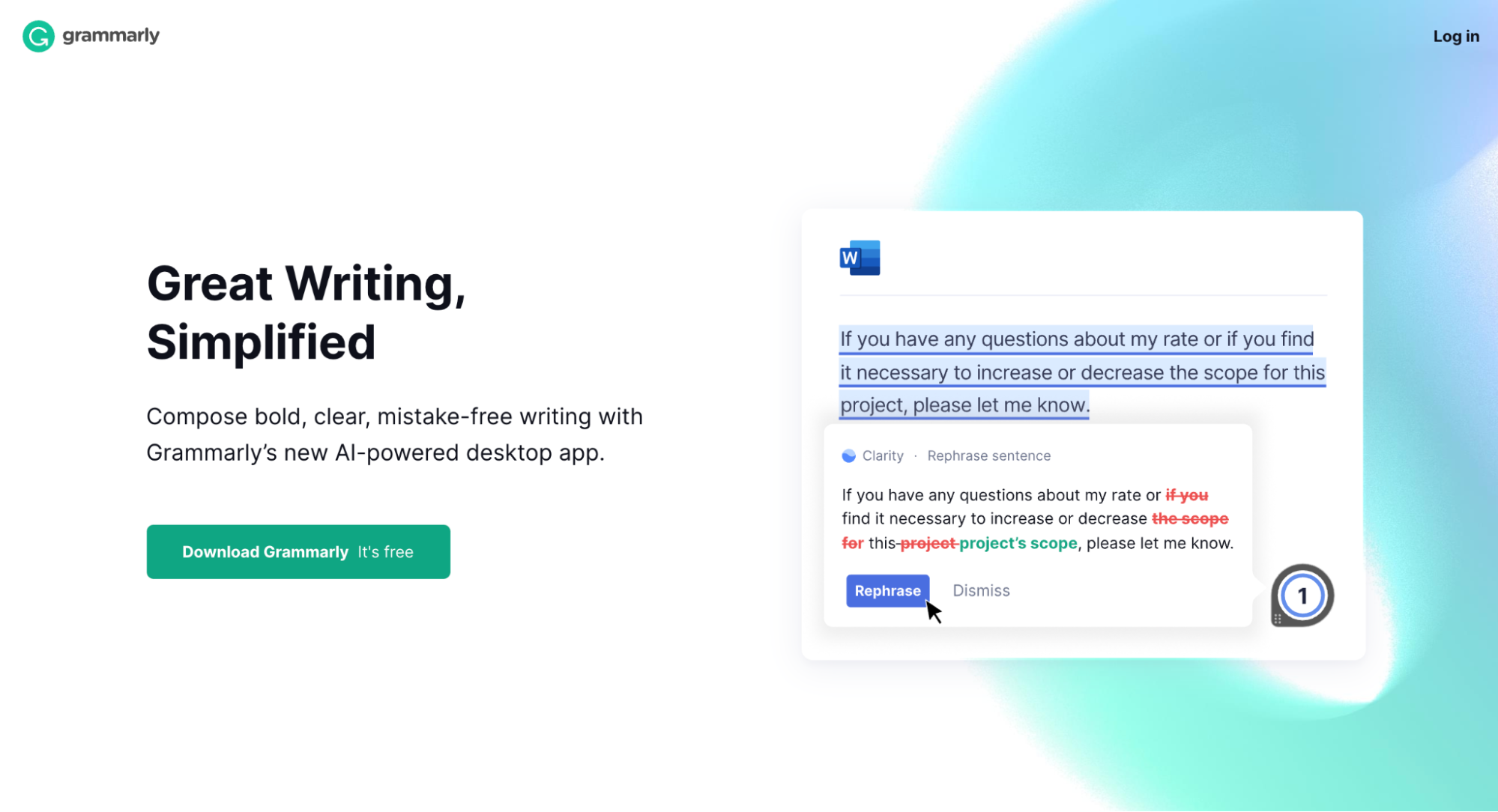
But there’s one thing that I think shows how well Grammarly understands its customers and the market.
Once you see this tactic, you will understand exactly why Grammarly targets all those keywords from the previous section.
And why it doesn’t matter that most of these keywords drive no-click searches.
Let’s take a look at one of their most valuable pieces of content, the page that shows how to use “effect” and “affect” correctly.
When you get to this page, this is the first thing you see:
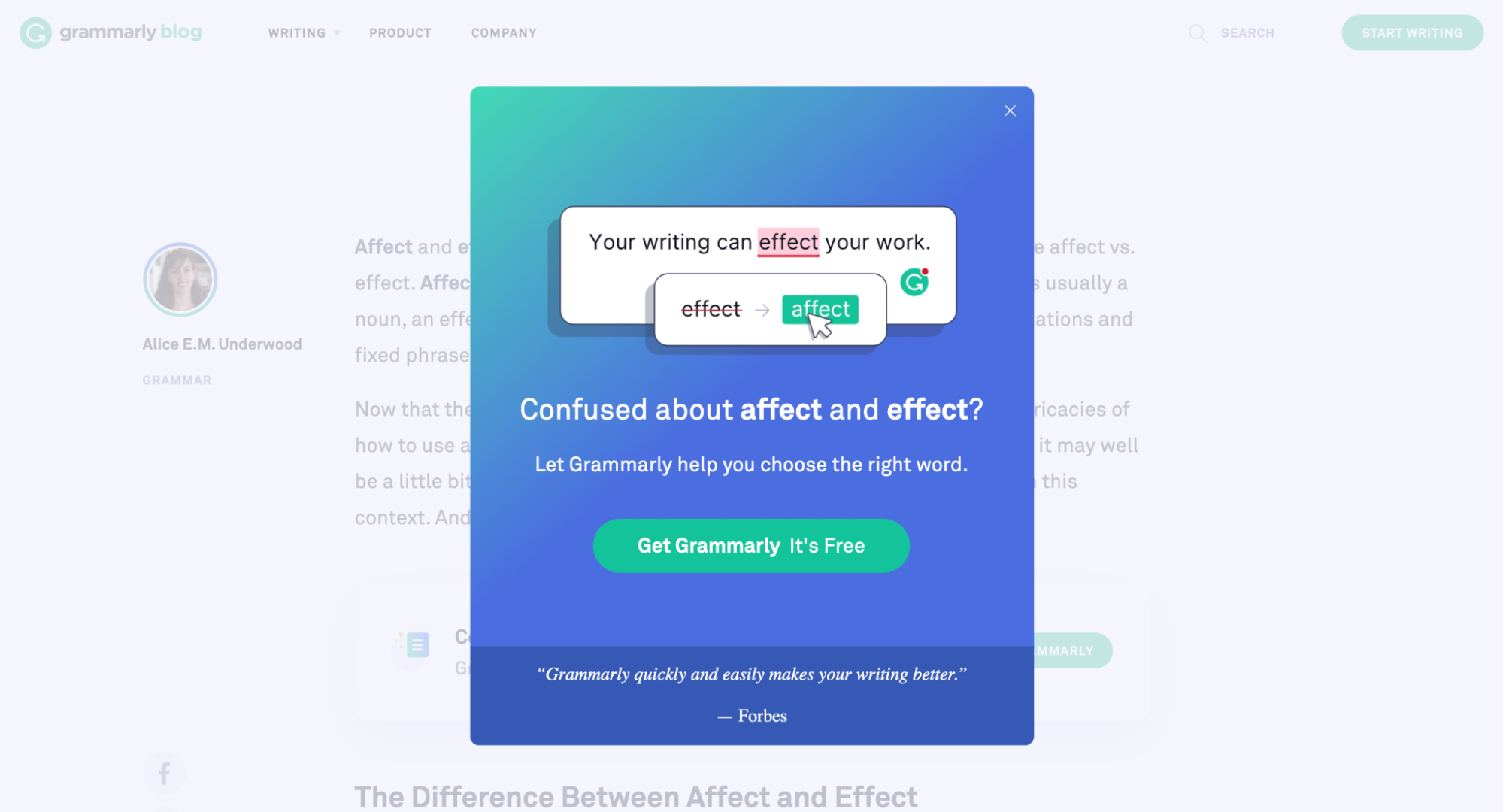
Not the answer you were looking for, but something better. A solution.
Grammarly knows that the people searching for typos and grammatical questions don’t REALLY want to learn anything.
These users just want to avoid making a mistake in their blog post, email, social media post, or other written content.
Without saying much, this shows a new user the immediate impact of using Grammarly. Once they start using the extension, a user would never have to think about using the right word or how “definitely” is spelled correctly.
That is massive, especially for people who aren’t confident writers or who don’t want to remember every grammar rule.
It’s like this on nearly all of the other Common Typo and Grammar Questions landing pages too:
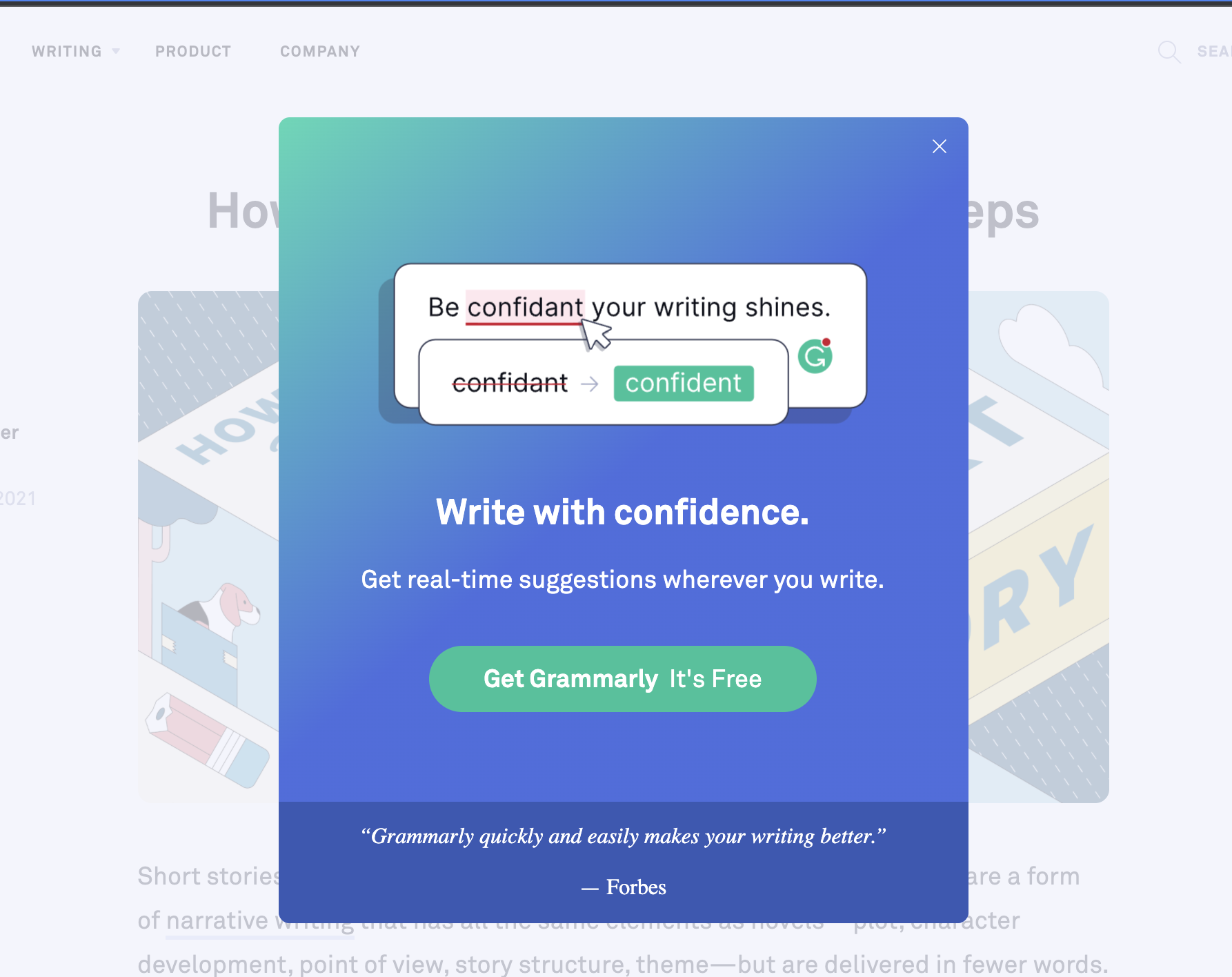
Most of the time, I would say that a popup like this impacts the user negatively. But this is one of the few instances where a popup is tailored exactly to their ideal user.
Grammarly is built for those people who need a large helping hand when it comes to spelling or grammar, not just professional writers.
That’s why this popup is so deadly.
It hits on those pain points before the user really even reads the content.
Unlike most content marketing efforts, Grammarly is hoping you don’t actually read the content.
It’s just a tool that they are using to get that popup in front of more people!
Do you really want to learn how to use an oxford comma, or would you rather have Grammarly just do it for you?
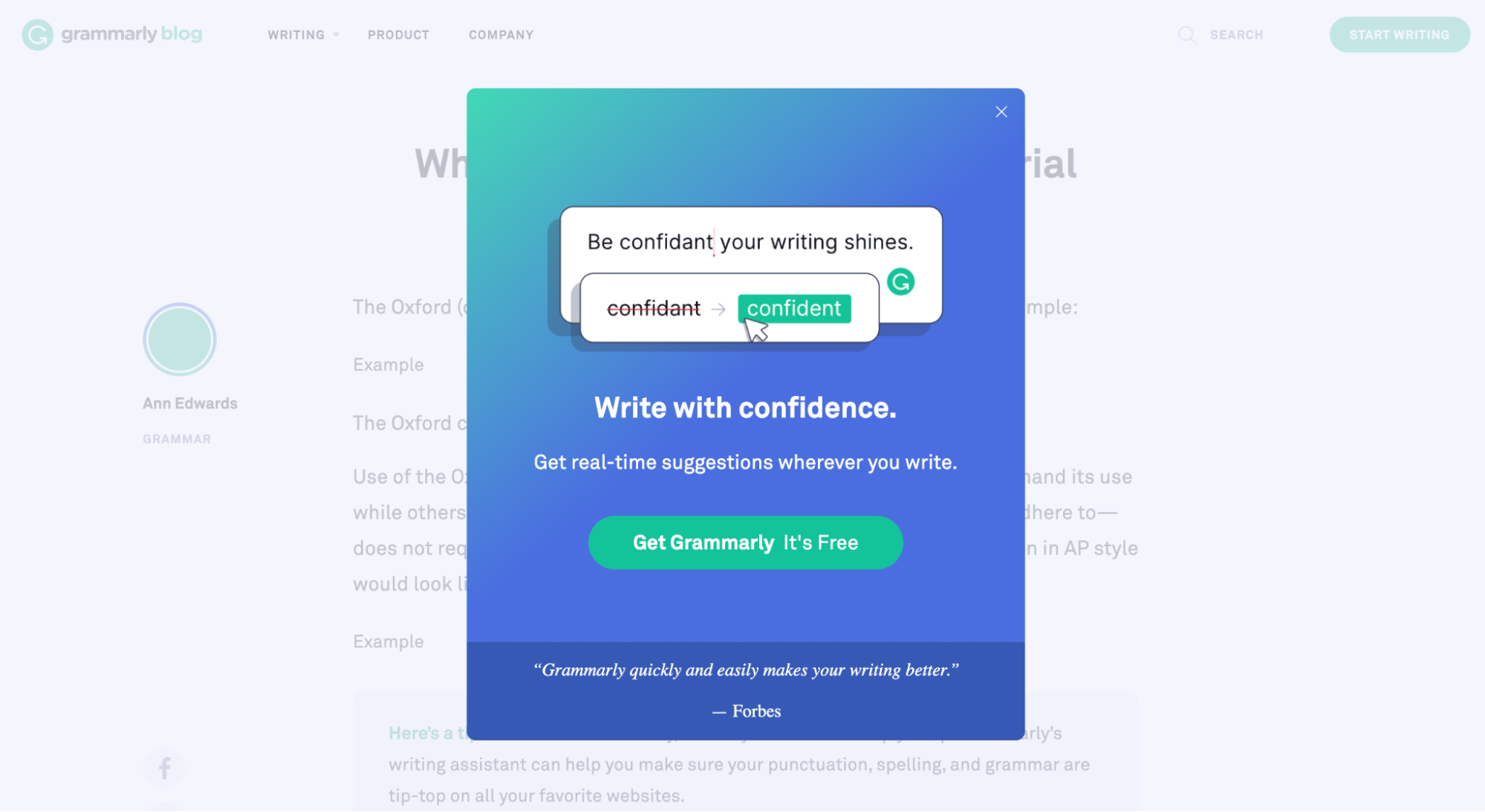
Even as a writer, I would like to put all of that on autopilot.
This simple tactic that likely drives a ton of conversion has probably solved the no-click problem that has been rising over the past few years.
Otherwise, why would Grammarly be investing in all this content? Or running ads on extremely competitive terms? Exactly, they wouldn’t be.
As Well As Product-Content Fit
Grammarly obviously understands their customer’s pain points extremely well, which has led to a perfect Product-Market Fit
But I would take that even a step farther: they have a nearly perfect Product-Content Fit.
Now even if someone clicks through that popup, the content on each page is positioned extremely well.
Grammarly knows that the people searching for common typos likely don’t want to learn anything, they just want a quick solution or answer.

You don’t have to read an entire article to answer your question, it’s usually in the first few lines. Then it pushes the reader into another tailored call to action, or two!
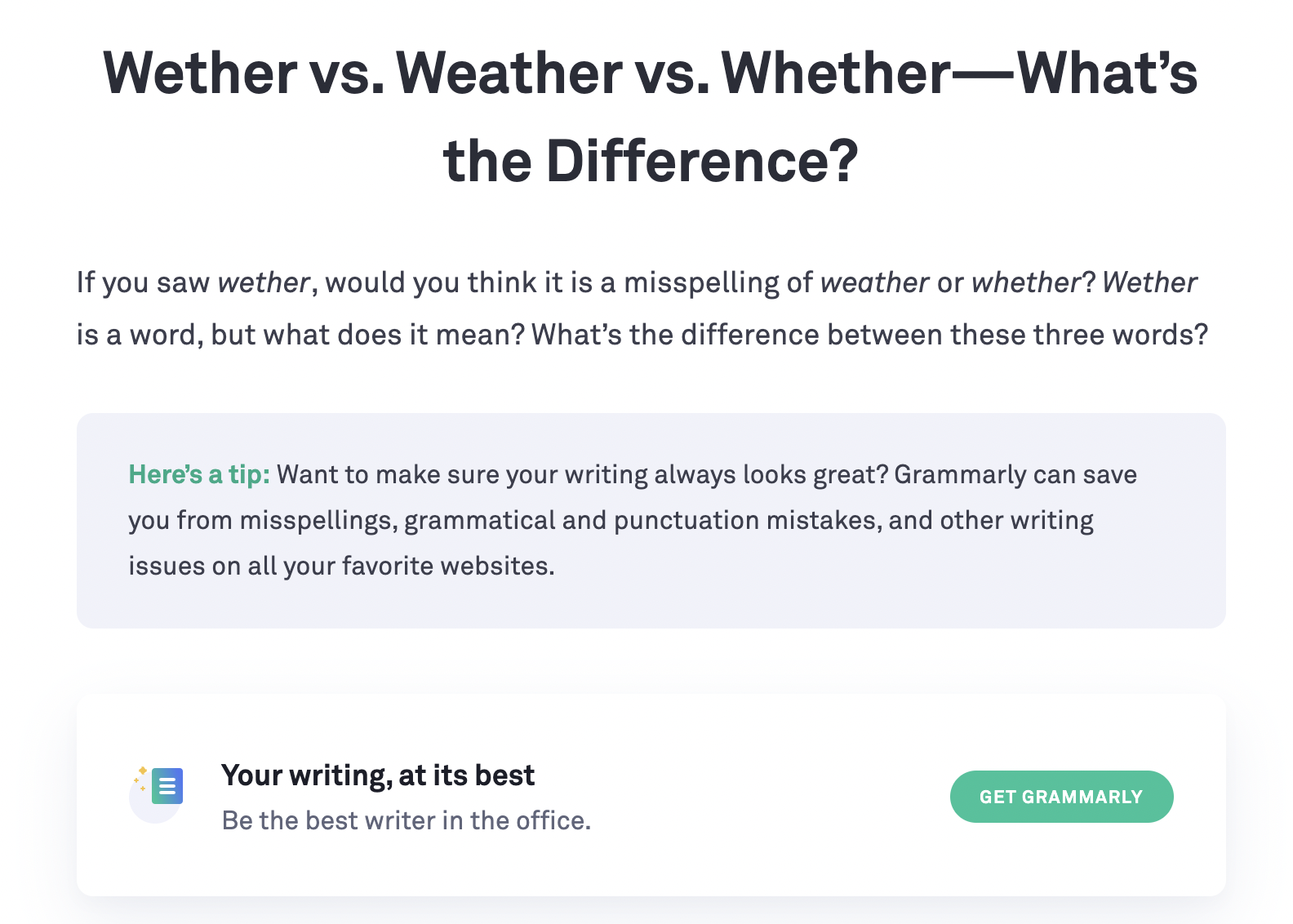
In this example, there is more call to action than content! And the calls to action are positioned so that they solve that main pain point that most of their potential customers have.
The content is formatted so it not only answers someone’s question but also can rank in the first few spots of a keyword.
Because without all the supporting content, it would be almost impossible to get that popup in front of the right people.
Wait, I take that back. Not almost impossible, actually impossible.
For example, this post accurately describes what an adverb is in the first sentences:
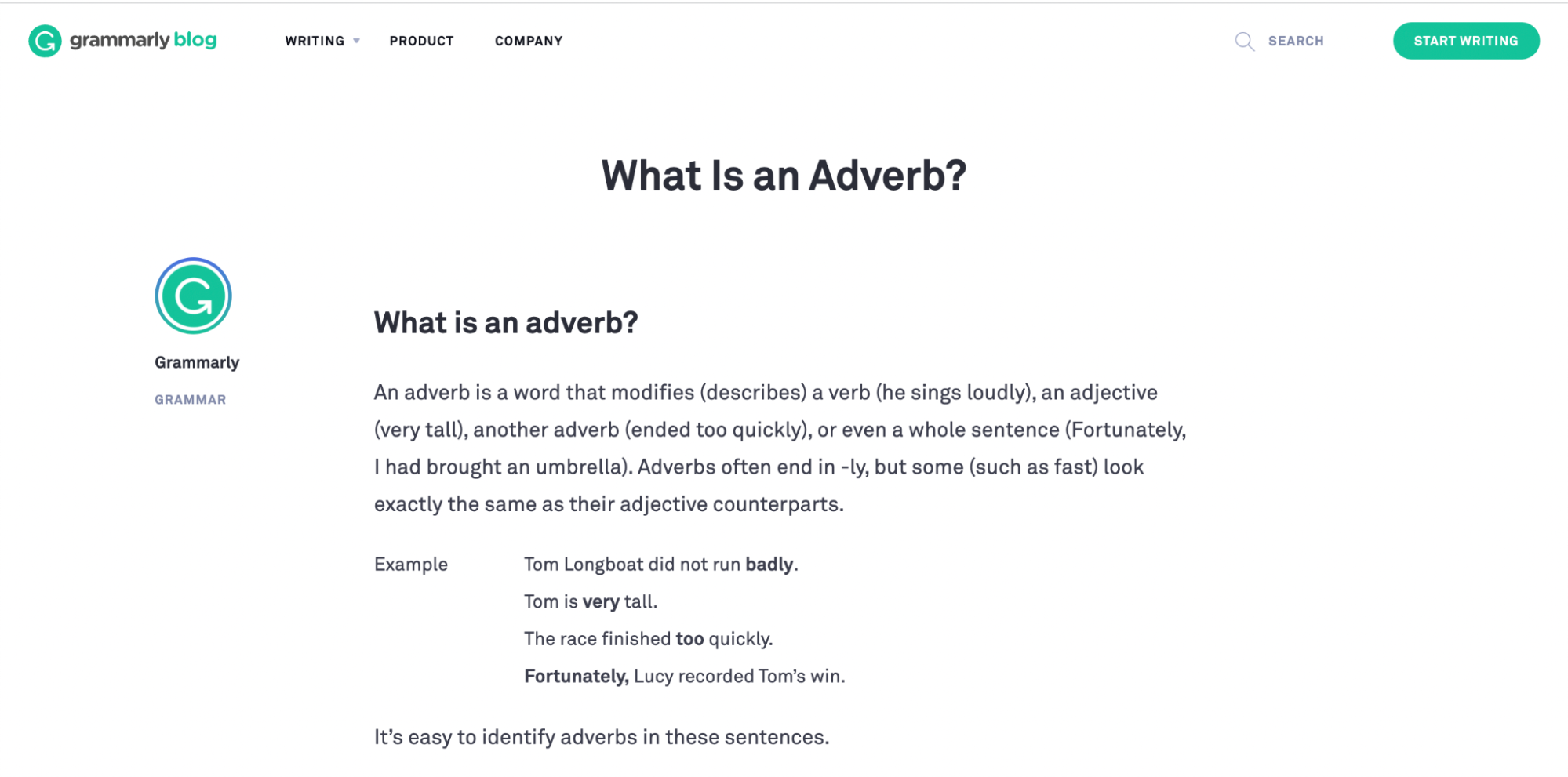
That keyword alone drives around 47k searches per month. But they also target a bunch of different long-tail keywords as well throughout the blog post:

That long-tail keyword receives around 1.6k searches per month. Not bad!
Each of the popular Common Typo and Grammar Questions takes a similar approach and allows Grammarly to target a plethora of different keywords.
Additionally, I believe that Grammarly has tailored the Common Typo and Grammer Questions content so that someone can get a quick answer but doesn’t really teach someone the concept:
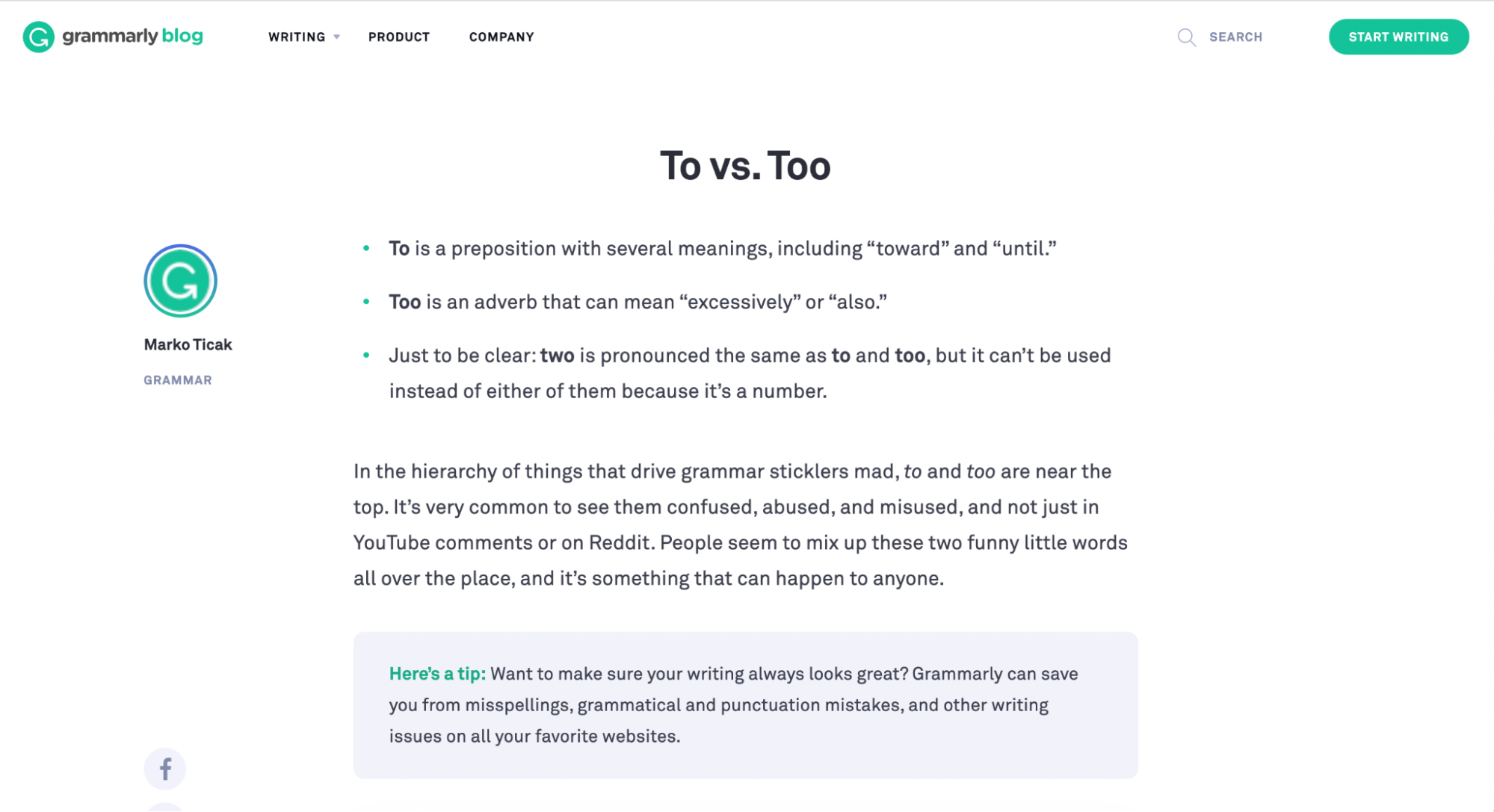
So next time a user needs to know if they should use an extra comma or not, they can come back to that page.
Again and again. Until eventually, they sign up for Grammarly.
Like I said above, Grammarly knows that their users don’t REALLY want to learn all of these concepts, they just want to sound competent.
Most people would say that Grammarly’s main user is a writer or someone who wants to improve their craft. Like me.
In reality, it’s mainly someone who doesn’t want to sound dumb in an email or document.
Competitors Don’t Get It
One thing that should be clear by now is that Grammarly definitely understands who is searching for those typos and grammar questions.
Their competitors don’t.
Like, at all.
As a reminder, Merriam-Webster and Dictionary.com drive a combined 200M+ sessions per month and rank on around 35M keywords.

Grammarly only drives a fraction of that traffic, but it doesn’t matter as much because they understand their user’s pain points and motivations.
For example, let’s take a look at the content that is ranking for a top keyword like “what is an adjective.”
At the time of this writing, Grammarly was ranking in the second spot of this keyword that gets about 60k searches per month.
Here are some of the other brands that are ranking at the top:
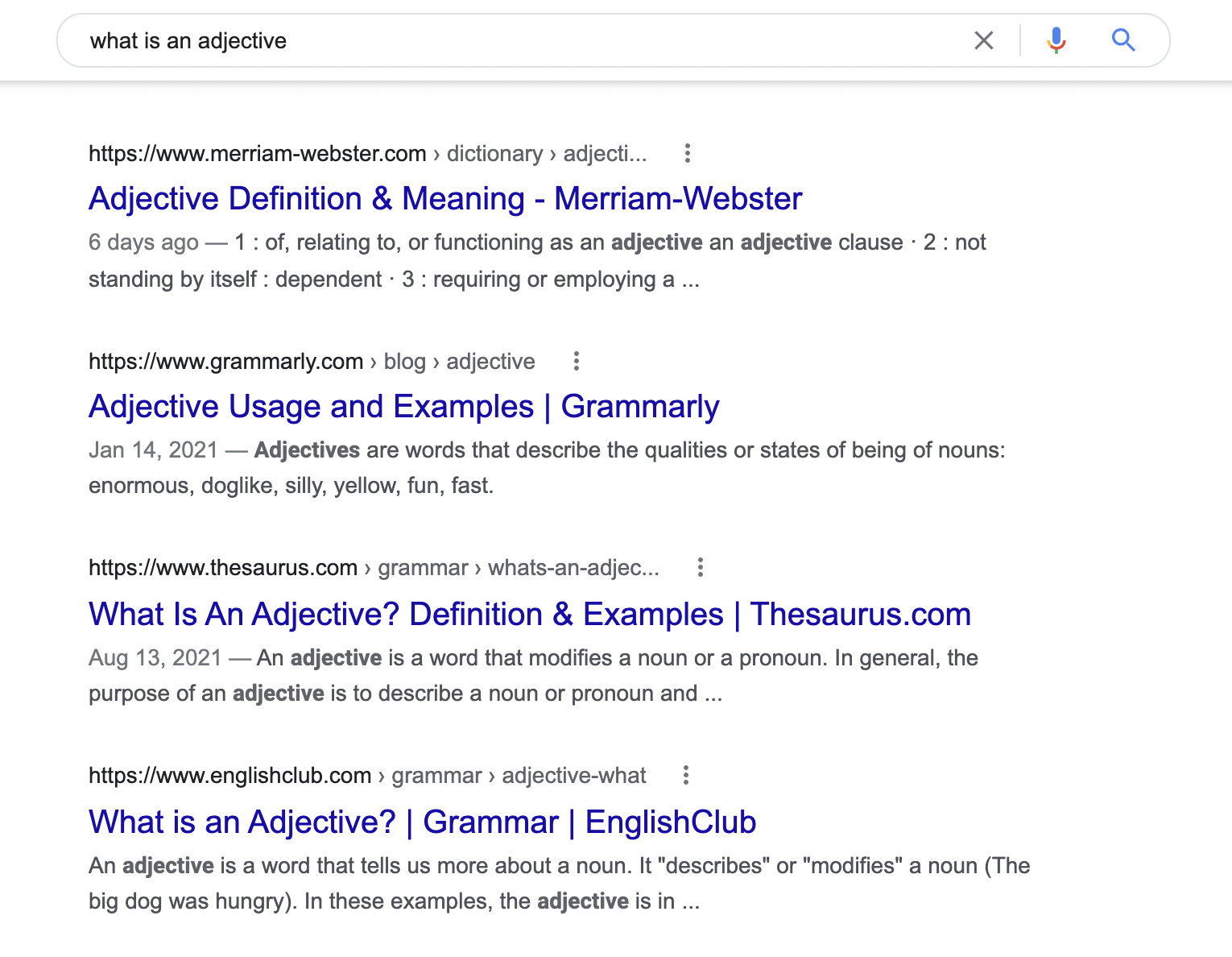
Now let’s break down each of those brands in order of how they rank.
First up is Merriam-Webster!
This is what you’re greeted with once you click that link:

This popup tells you everything you need to know about who Merriam-Webster thinks is searching for those Common Typos and Grammar Question keywords.
People who don’t want to sound dumb in an email don’t want to sign up for a “word of the day” newsletter.
Also, an ad?!
Actually, that makes sense. Merriam-Webster seems to make a good chunk of its revenue from ads. They are literally plastered all over that blog post.
Once you make it to the actual content, you can see that it’s very dry and has zero calls to action:

It’s also really hard to navigate and consume, even if you look past all the distracting ads.
Unlike Grammarly, they don’t actually want to help those users improve their writing. Instead, Merriam-Webster mainly wants to drive as much traffic as possible so they make more ad revenue.
Now let’s directly compare that to what you see when you land on Grammarly’s page:

Like we saw in the previous section, a new user is shown a solution to their problem before they even land on the blog post.
Grammarly knows what these people want and is giving it to them without jumping through any hoops.
The content is also a thousand times easier to navigate:
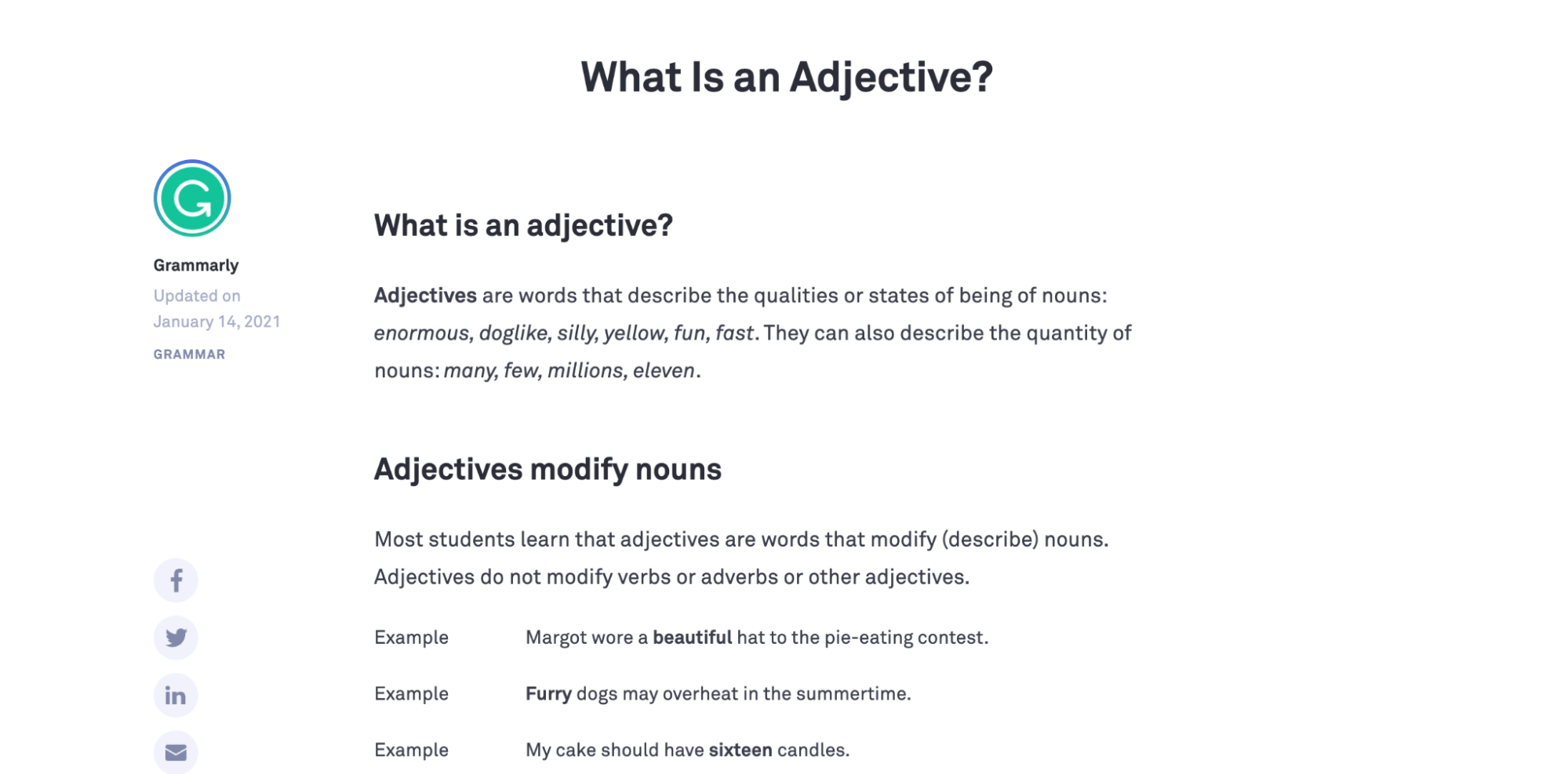
Even if you didn’t want to use the Grammarly tool, you could still get a lot of value from this page because it’s formatted so well.
It does feel like they want everyone to be a better writer and communicator, not just sell some ad space.
The final page we are going to look at comes from Thesaurus.com:
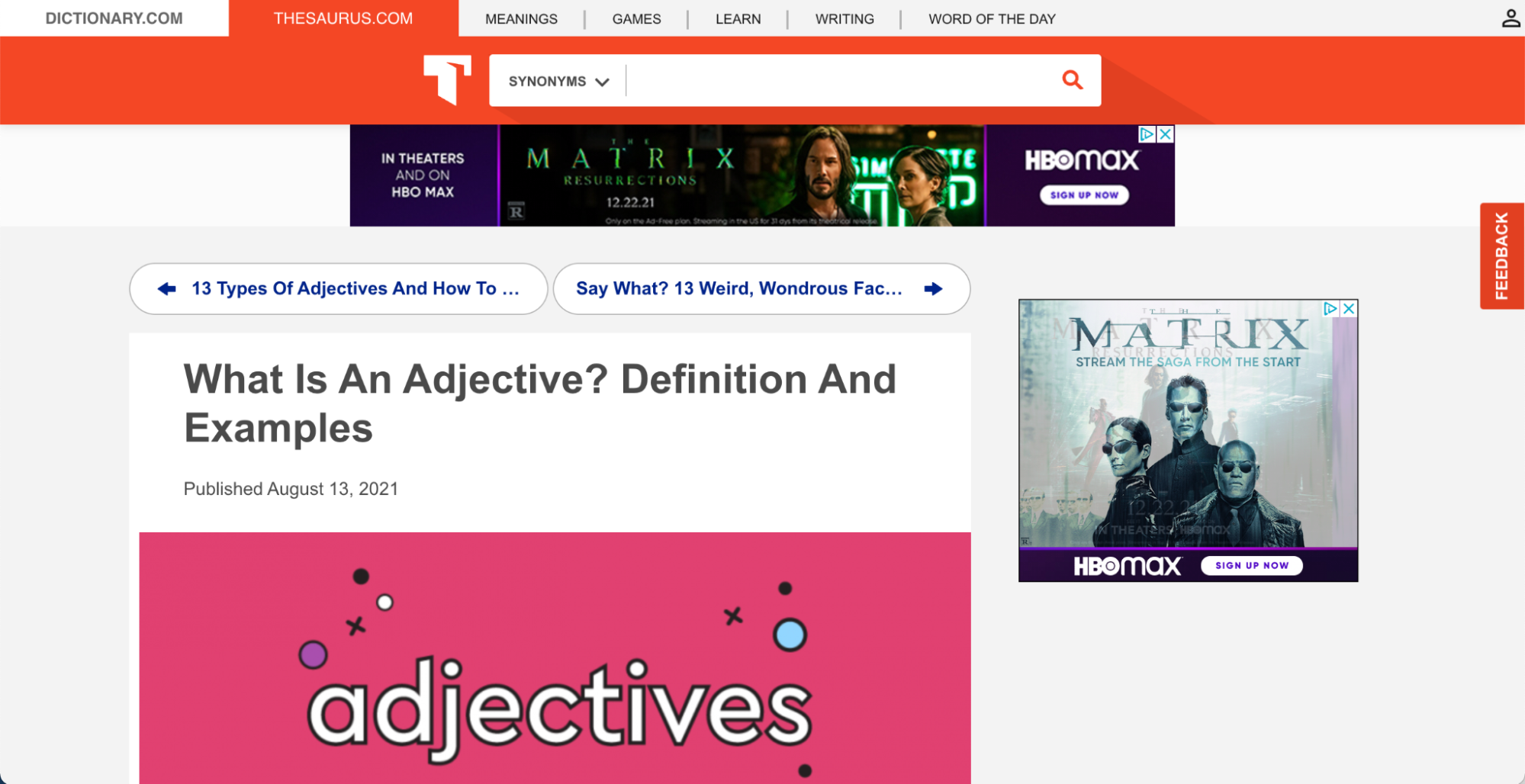
It shares a lot of the negative aspects that we saw from Merriam-Webster. Lots of ads, poor layout, and slow loading time.
Unlike the other content ranking for this keyword, you have to scroll a few times before you get an answer to your question. That can’t be very helpful for someone looking for a quick answer.
And once you find it, you have to look through their poor UX design and ads like a periscope:
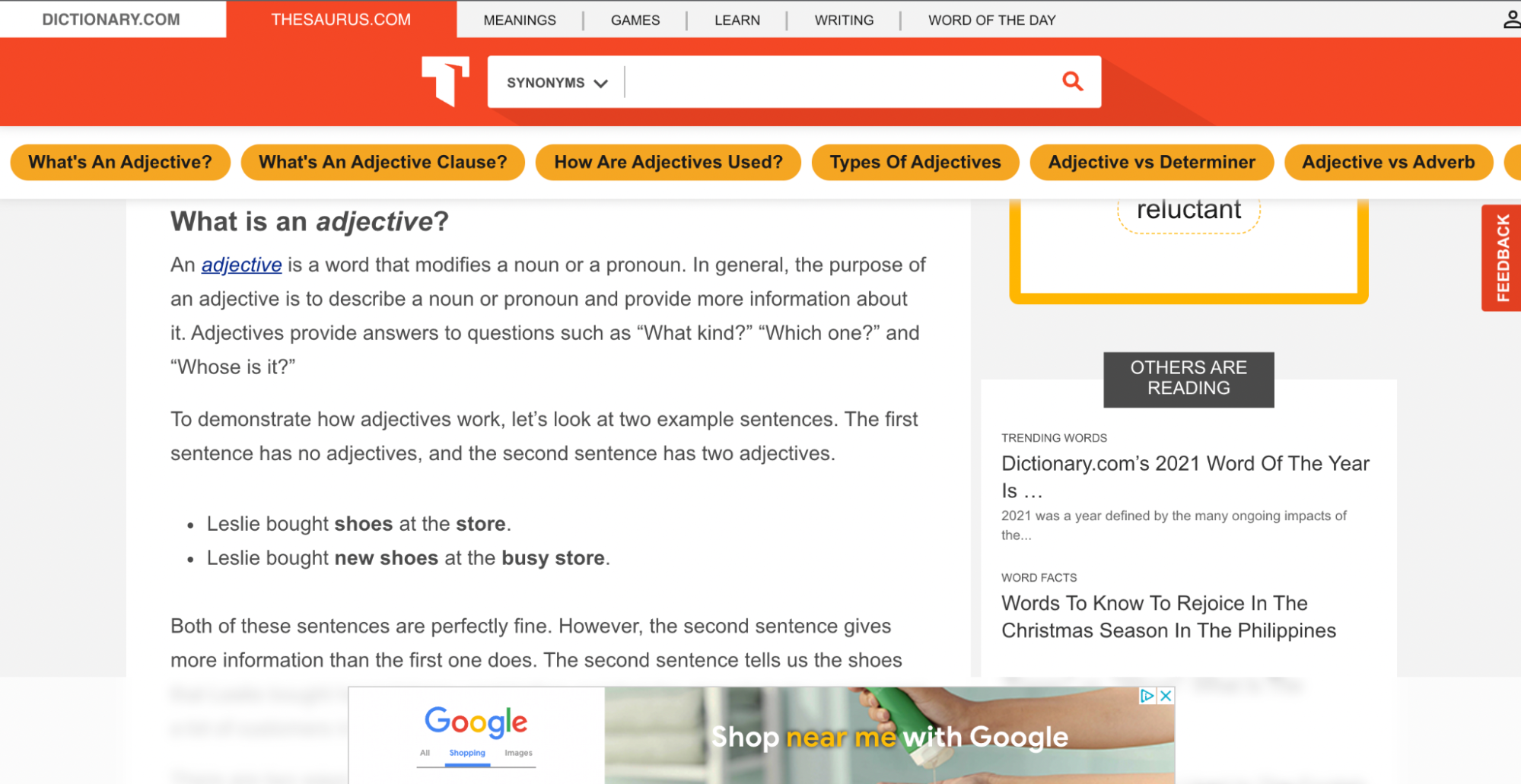
The only real call to action I saw on this page asked users to sign up for daily grammar lessons. I think I’m going to pass on that one.
That call to action is another great example of these brands not understanding who is searching for these Common Typos and Grammar Questions.
Surprisingly, they seem to have built a Grammarly competitor called the Grammar Coach:

But you can’t click on it…
And they don’t seem to be promoting it very heavily on other parts of their site.
Once you do navigate to it, you can also see that they don’t understand their users at all.
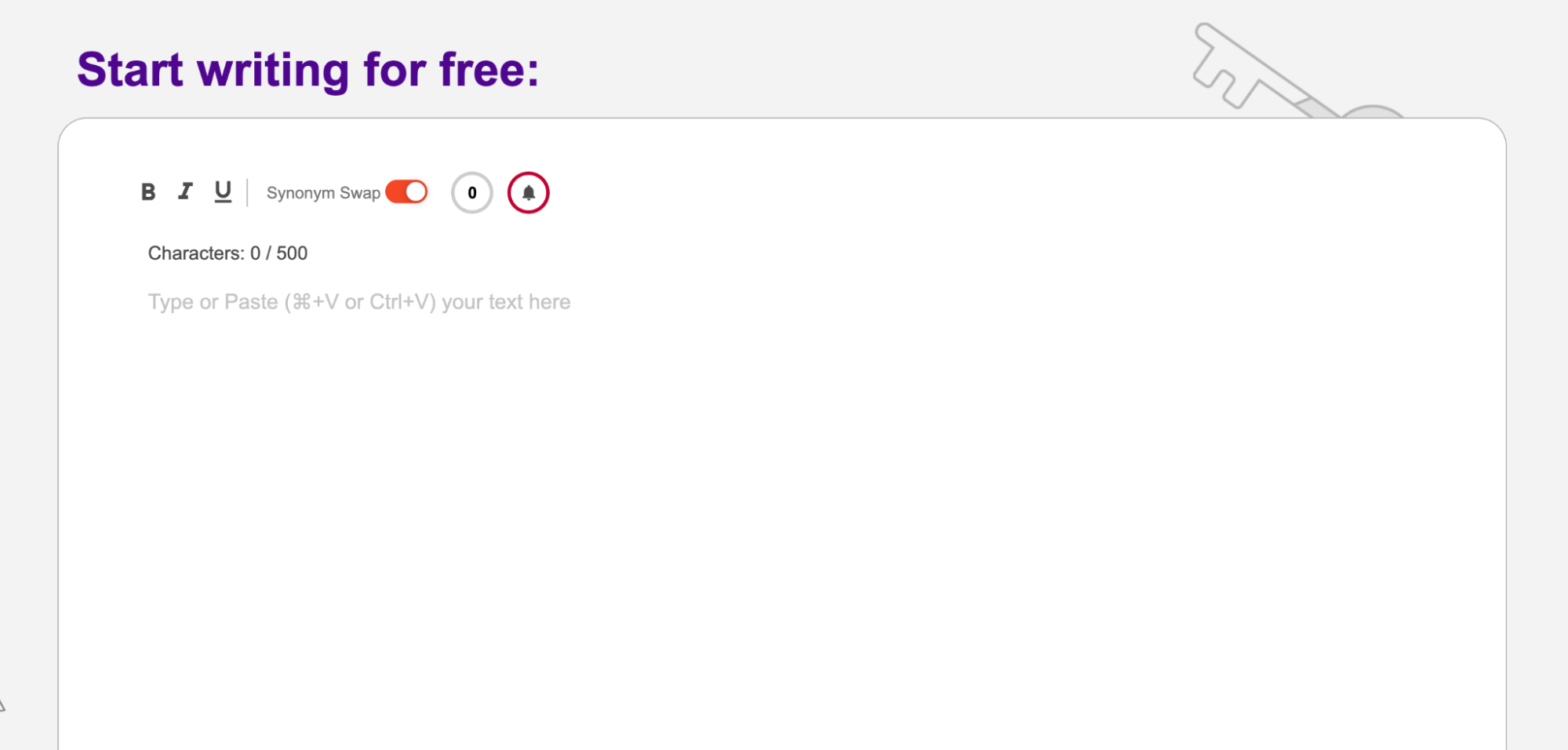
No one is going to want to copy and paste all of their daily writing into the Grammar Coach.
Especially when Grammarly works on almost every site and app that you could think of.
It’s literally the Spell Check for the entire internet, and it has probably helped millions of people become more confident writers.
Not just check the spelling of truly or definitely for the hundredth time.
Wrap Up
Very few brands have achieved almost perfect Product-Market Fit. Grammarly happens to be one of them.
They truly understand who is searching for these Common Typos and Grammar Questions, unlike any of their main competitors.
The content moat they have built around those keywords is an incredible testament to that idea as well.
Instead of offering the users an answer, they offer something much better: a solution.
I think that’s where a lot of content marketers trip up when creating new content.
They just answer the question or the search and don’t think about what the user is really trying to accomplish.
But if you’re able to isolate pain points and provide a real solution like Grammarly did, you can take your content to the next level.







